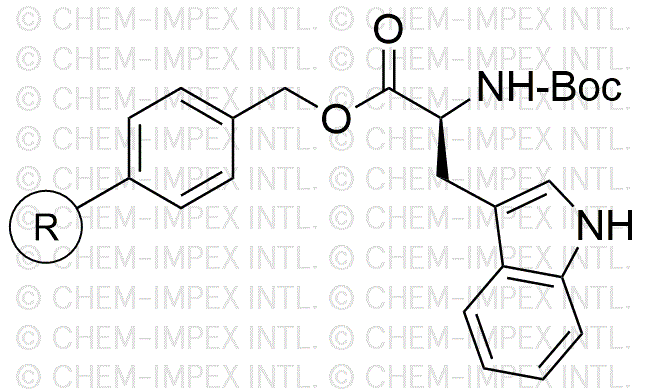Na-Boc-L-tryptophan Merrifield is widely utilized in research focused on
- Peptide Synthesis: This compound is a key building block in the synthesis of peptides, enabling researchers to create complex proteins for various studies in biochemistry and molecular biology.
- Drug Development: Its role in drug design allows for the exploration of new therapeutic agents, particularly in the fields of oncology and neurology, where tryptophan derivatives can influence neurotransmitter pathways.
- Protein Engineering: By incorporating Na-Boc-L-tryptophan into protein structures, scientists can modify protein functions, enhancing stability and activity for applications in biotechnology.
- Research in Neuroscience: This compound is used to study the effects of tryptophan on serotonin production, which is crucial for understanding mood disorders and developing antidepressants.
- Bioconjugation Techniques: It serves as a versatile reagent in bioconjugation, facilitating the attachment of biomolecules to surfaces or other molecules, which is essential in creating targeted drug delivery systems.
General Information
Properties
Safety and Regulations
Applications
Na-Boc-L-tryptophan Merrifield is widely utilized in research focused on
- Peptide Synthesis: This compound is a key building block in the synthesis of peptides, enabling researchers to create complex proteins for various studies in biochemistry and molecular biology.
- Drug Development: Its role in drug design allows for the exploration of new therapeutic agents, particularly in the fields of oncology and neurology, where tryptophan derivatives can influence neurotransmitter pathways.
- Protein Engineering: By incorporating Na-Boc-L-tryptophan into protein structures, scientists can modify protein functions, enhancing stability and activity for applications in biotechnology.
- Research in Neuroscience: This compound is used to study the effects of tryptophan on serotonin production, which is crucial for understanding mood disorders and developing antidepressants.
- Bioconjugation Techniques: It serves as a versatile reagent in bioconjugation, facilitating the attachment of biomolecules to surfaces or other molecules, which is essential in creating targeted drug delivery systems.
Documents
Safety Data Sheets (SDS)
The SDS provides comprehensive safety information on handling, storage, and disposal of the product.
Product Specification (PS)
The PS provides a comprehensive breakdown of the product’s properties, including chemical composition, physical state, purity, and storage requirements. It also details acceptable quality ranges and the product's intended applications.
Certificates of Analysis (COA)
Search for Certificates of Analysis (COA) by entering the products Lot Number. Lot and Batch Numbers can be found on a product’s label following the words ‘Lot’ or ‘Batch’.
Número de catálogo
Número de lote/lote
Certificates Of Origin (COO)
This COO confirms the country where the product was manufactured, and also details the materials and components used in it and whether it is derived from natural, synthetic, or other specific sources. This certificate may be required for customs, trade, and regulatory compliance.
Número de catálogo
Número de lote/lote
Safety Data Sheets (SDS)
The SDS provides comprehensive safety information on handling, storage, and disposal of the product.
DownloadProduct Specification (PS)
The PS provides a comprehensive breakdown of the product’s properties, including chemical composition, physical state, purity, and storage requirements. It also details acceptable quality ranges and the product's intended applications.
DownloadCertificates of Analysis (COA)
Search for Certificates of Analysis (COA) by entering the products Lot Number. Lot and Batch Numbers can be found on a product’s label following the words ‘Lot’ or ‘Batch’.
Número de catálogo
Número de lote/lote
Certificates Of Origin (COO)
This COO confirms the country where the product was manufactured, and also details the materials and components used in it and whether it is derived from natural, synthetic, or other specific sources. This certificate may be required for customs, trade, and regulatory compliance.


